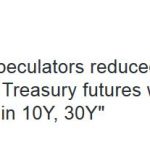The Canadian economy has done well this year, receiving support from the improving crude oil market. The announcement of a US, Mexico, and Canadian trade deal has also provided support for the Canadian economy. This is mostly because of the central role the United States plays in the Canadian economy. Every year, the country exports goods worth more than $500 billion.
However, the Canadian dollar, also known as the Loonie has not done well. It has lost more than 4% against the USD. These gains are mostly because of the strength of the USD. The US dollar index has gained by more than four percent as well.
On Friday, Canada’s statistics office released inflation numbers for September that missed analysts forecast. The numbers showed that the CPI rose at an annualized rate of 2.2 percent, which was lower than the expected 2.7 percent. This was the lowest level since June this year. On a MoM basis, the CPI fell by minus 0.4 percent, which was worse than the minus 0.1 percent that traders were expected. The closely-watched core CPI rose by an annualized rate of 1.5%, which was lower than the expected 1.8%.
Another disappointing number was the retail sales. In August, the retail sales declined by minus 0.1%, which was worse than the expected 0.3% gain. This was the lowest growth since June.
These numbers came less than a week before the Bank of Canada (BOC) is expected to raise interest rates. This Wednesday, the BOC is expected to hike from 1.5% to 1.75%. This may be the second rate hike this year after the first one in the July meeting.
The disappointing inflation numbers may not influence the BOC’s decision to hike rates. Traders will, however, focus on the forward guidance for next year. Further weakness by the Loonie may see the pair test the 1.3190 level while the dollar weakness may see it test the 1.3000 level. The former may be a scenario as the pair completes the cup and handle pattern.















Leave A Comment